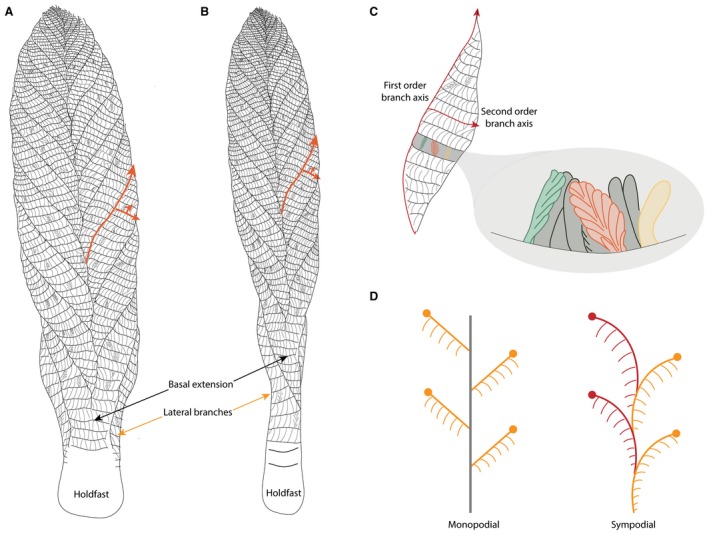Figure 11.

Morphological model of Charnia masoni. A–B, Charnwood‐like and parallel‐sided morphotypes of Charnia masoni, respectively; orange arrows indicate the orientation of the branch axes up to third order; twisting of central axis is illustrated in B. C, observed variation in third and fourth order branch organization; the orange branch is displayed and unfurled (see Fig. 1C), the green branch is rotated and unfurled (see Fig. 3G) and the yellow branch is undivided and furled (see Fig. 6E); terminology after Brasier et al. (2012); red arrows indicate the first order branch axis (oriented apically) and the second order branch axis (oriented laterally). D, monopodial and sympodial central axial arrangements; monopodial growth is characterized by lateral branches emerging from a single central axis, while sympodial growth is characterized by successively stacked lateral branches, without a separate central axial structure (e.g. Berking 2006).
